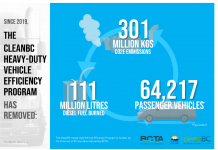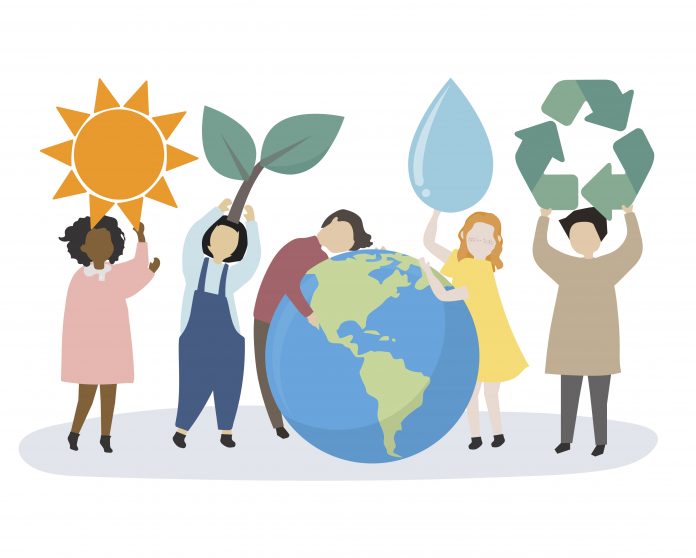Earth Day 2021 marked a turning point for renewable green energy globally. Canada already sources 60% of its electricity from renewable green energy. Water has provided us with abundant power and in the future, Canada will further benefit from its potential and increased use. Water could be called one of our liquid assets.
On Thursday, April 22, 2021, Earth Day, the Canadian government made a bold commitment to lower our greenhouse gas emissions. PM Trudeau said Canada will target a 40 to 45 percent reduction below 2005 levels by 2030. This commitment was part of an international climate summit convened by U.S. President Joe Biden.
The United States, our largest trading partner, and its new President Biden have made it abundantly clear that they see the future and the road to post-pandemic economic recovery as one that adopts renewable green energy sources while at the same time taking America off greenhouse gas causing coal and gas-powered electric plants.
Canada will benefit from being America’s neighbour and trading partner. We already produce an abundance of “green” hydroelectric power and are capable of creating two times more than we are producing now.
As America focuses on this massive change from greenhouse gas reduction to renewable green energies and infrastructure, we in Canada must be ready to capitalize on new opportunities.
A project such as the one envisioned by the U.S. will be massive in scope, requiring new technologies, science, and manufacturing as well as massive infrastructure building and development. Canada can blend its own commitment into the American need. As North American partners both countries can make economic gains while at the same time benefiting the planet with a greener environment.
That is the key motivator to the Earth Day announcements and commitments.
In decades past governments have used war as a tool or catalyst to escape from economic malaise and depressions. WW2 and the cold war helped fuel economic recovery in the Americas. The pandemic has become our 21st-century war, which has decimated global economies and caused massive changes in our lives. Our economic recovery will include new sustainability and green energy initiatives.
Reuters reported on March 31, “U.S. President Joe Biden’s vast plan to modernize the nation’s infrastructure includes hundreds of billions of dollars to boost the market for electric vehicles, renewable power, and advanced clean energy technologies while stripping away subsidies for fossil fuels.”
As Clean Energy Canada CEO Merran Smith said to CBC in January, “the signal the U.S. is sending — they want to buy clean, low-carbon products. And we’re here next door to them and could be delivering them.”
Canada is a world leader in hydropower. We generate about 12% of the world’s hydroelectric power. Thanks to electric generation that is predominantly hydro, Canada has the cleanest and most renewable electricity system of the G8 countries. Currently, there are at least 4 massive new hydro projects under construction in Canada. We have the potential to triple our hydroelectric production.
The word hydro is Greek, meaning water. 71% of the globe is made of water. It is the world’s largest and most natural resource. The earth’s water supply is in constant motion, a massive naturally occurring source of latent power and energy.
Moving water has been used as a power source for thousands of years. Wood and flour mills used running water to power the equipment essential to their production. Hydropower draws energy from falling or flowing water and converts it into electricity, without consuming, wasting, or depleting water in the process.
In 1878, the first hydroelectricity was produced in England to power a light bulb in a manor house. Canada’s first hydropower generating station became operational near Montmorency Falls in 1885, providing lighting to the city of Québec.
Presently over 60% of Canada’s electric power is “Hydro” power. In Quebec, 99% of all electricity comes from hydropower. We even call our electricity “Hydro”.
Quebec has been exporting hydroelectricity to the northeast U.S.A. for over 40 years. Quebec has more than 40 percent of Canada’s water resources. Hydro-Québec is the fourth largest hydropower producer in the world.
Quebec electricity is greener and cheaper than the electricity produced in the Northeastern states. And Quebec wants to sell them more. According to The Montreal Gazette, “Quebec is close to signing agreements to create two major transmission lines into the northeastern United States that could increase its export sales by nearly 50 percent and bring in tens of billions of dollars in revenue in the coming decades. Quebec Premier Legault pledges to make Quebec the green energy supplier of northeast America.”
But not all are in agreement in the “green” valley. Some green energy advocates claim that hydropower is not as “green” as once thought. Karen Bakker, founding director of the water governance program at the University of British Columbia says hydropower is “no longer the cleanest, or greenest, or cheapest way of meeting our future energy and capacity needs. “It’s not that hydropower is competing against coal,” Bakker says. “It’s that it’s competing against 21st-century renewables such as wind and solar.
Solar and wind energy need to be part of our renewable green rebuild and part of our economic recovery. New energy sources mean new jobs, new technologies, and new manufacturing and infrastructure opportunities. Canada could and should become a global leader in renewable green energy and sustainability. Having the expertise to supply them to a developing world could become one of Canada’s leading exports.
Biden wants the U.S. off of dirty fuel like coal and oil as quickly as possible. Wikipedia says, “In 2019 there were 241 coalfired electric plants which generated 23% of the United States electricity.”
The development of green, renewable alternatives takes time to establish both the facilities and infrastructure. Canada’s abundant hydroelectric power may be the quickest easiest alternative, to his green renewable energy plan.
Earth Day highlights a shrunken vulnerable interdependent world. En masse we have struggled to overcome the pandemic. Never have we been so focused on events happening at the four corners of the world and the effects they may have on our day-to-day lives. It is the pandemic that has diminished our economies. Canada, the U.S., and key global partners see adopting green initiatives as essential to our economic recovery.
Renewable green energy is a key element of the Federal Liberal party’s post-pandemic economic recovery. The 2021 budget has set aside $17 billion in new direct spending and tax relief measures that the government hopes will decarbonize heavy industry, build a cleaner economy and create jobs.
The future appears to be green for the blue planet. Fortunately, we in Canada have ample renewable green energy available for export to the U.S. which will be in need of our hydroelectric power.
Part of our post-pandemic economic recovery may be water-powered, Canada’s liquid asset.






















